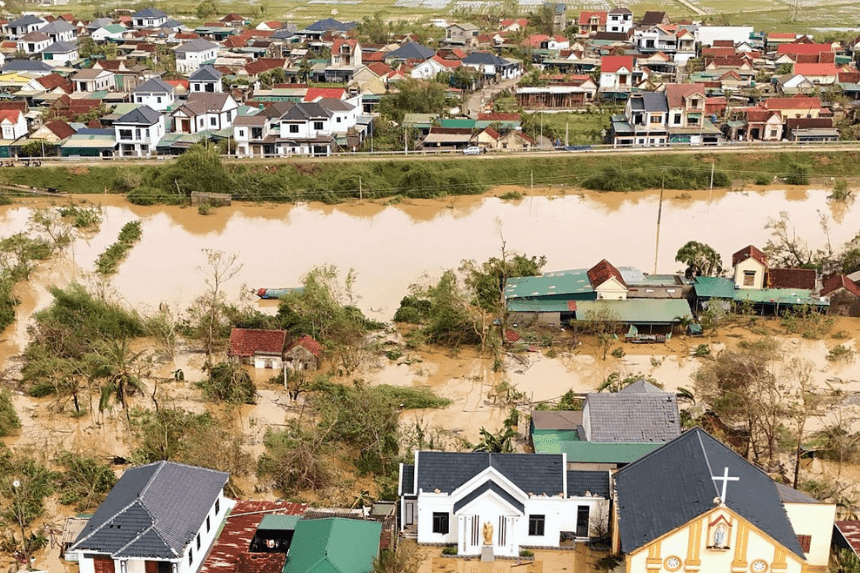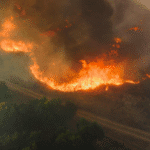At least 11 people have been killed and dozens of people are missing after Typhoon Buloi in Central and Northern Vietnam. The powerful storm made landfall on Sunday night, causing heavy winds, torrential rains, and widespread destruction. The houses were destroyed, the roads were flooded, and the major infrastructure was severely damaged, before the system weakened as it went to Laos.
Vietnamese officials evacuated around 30,000 residents before the storm, while emergency services continue to search for 17 missing fishermen lost at sea. The storm followed a deadly route, having already claimed more than 20 lives in the Philippines before reaching Vietnam.
How Severe Was the Storm’s Impact?
When Typhoon Bualoi struck Vietnam, it packed winds of up to 117 km/h (73 mph). The storm’s destructive force caused widespread flooding, toppled power lines, and washed away bridges. Central provinces like Ha Tinh were plunged into darkness, while crop fields in surrounding areas were left submerged.
Local transportation was also affected. Dozens of domestic flights were delayed or canceled over the weekend, disrupting travel and supply chains. Torrential rainfall, expected to total between 200 and 350mm, has left some regions at continued risk of flash floods. Here is the link to our article on the Darfur Famine Disaster.
What Areas Were Most Affected?
Northern and central Vietnam bore the brunt of the damage, with regions such as Nghe An and Ha Tinh reporting major destruction. In Ha Tinh, power outages left thousands without electricity. In rural districts, entire communities remain inaccessible due to collapsed roads and rising water levels.
The typhoon’s effects extended beyond Vietnam. It weakened as it moved across the border into Laos, but continued to bring heavy rainfall and the threat of landslides in already vulnerable areas.
What Actions Are Authorities Taking?
In response to Typhoon Bualoi, Vietnam’s Prime Minister Pham Minh Chinh issued urgent orders for coordinated rescue and relief efforts. Military units, police forces, and local volunteers have been mobilized across affected provinces. Boats and helicopters are also being used in search operations, particularly for those lost at sea.
Authorities have advised residents to stay indoors and avoid flood-prone areas as rainfall continues. Relief supplies, including food and medical aid, are being distributed in the hardest-hit communities. Here is the link to our article on the Sudan Conflict Disaster.
Are Typhoons Becoming More Frequent?
The devastation from Typhoon Bualoi follows closely behind Super Typhoon Ragasa, which recently caused widespread damage across the Philippines, Taiwan, and China. Experts say such intense and frequent storms are linked to climate change, which is fueling stronger typhoons and unpredictable weather patterns.
Vietnam, like many Southeast Asian nations, remains highly vulnerable to climate-driven disasters. This year alone, multiple storms have caused significant loss of life, property damage, and displacement in the region.
Final Thoughts
After Typhoon Bualoi, the immediate need to strengthen disaster preparedness and climate resilience in Vietnam and Southeast Asia became even more apparent. As extreme weather events grow more intense, early evacuations, infrastructure upgrades, and stronger international cooperation will be essential to safeguard communities from future storms.








